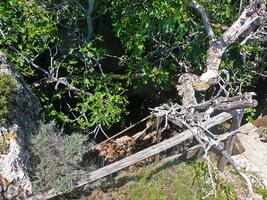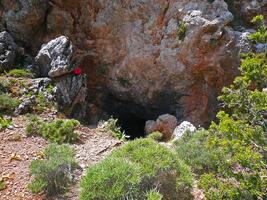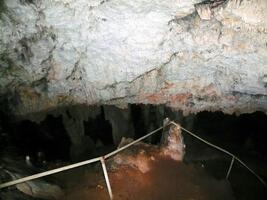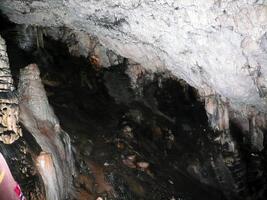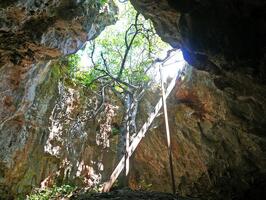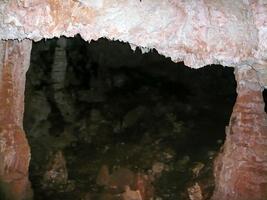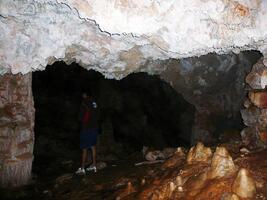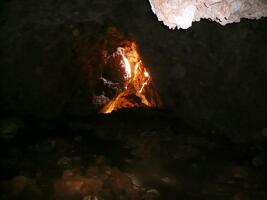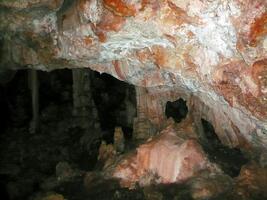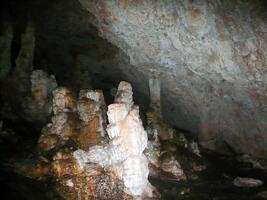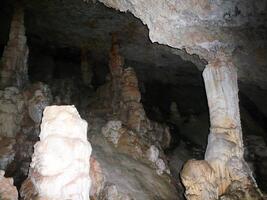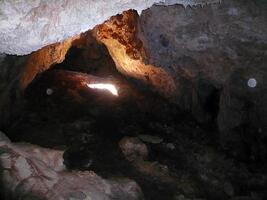Caves
In Pefki area there are many caves from which, three are of historic and touristic interest. Those caves are the cave of ‘Vreiko’, the cave of ‘Apoloustres’ and the cave of ‘Rousso Haraki’.
1. Vreiko
The cave of Vreiko is located about 2km north-east of the village. It is a cave and gulch and the known depth is 25-30 metres. The Entrance is an open and flat place that looks like a threshing floor. In the entrance there are stairs that make the entry and exit to the cave easier. A fig tree has grown at that place and its bouches cover a big gallery which is about 60-70 metres long. At the entry and the end of the gallery there are signs from the Neolithic Era.
South of the entrance is the gulch (Latsida) where there is water which dries up during autumn. At this part of the cave there metallic stands to assist people on their ways up and down. In every corner of the cave there are beautiful stalactites and stalagmites.
It is not difficult to visit this cave as cars can go about 250 metres before the caves entrance on the west side and almost on a daily basis, during summer months people visit the cave.
2.Apoloustres
The Cave of Apoloustres is located 2.5 km north of the village and it is a gulch of 15-20 metres deep as well. A big gallery 60x15 (WxH) metres and a non visible entrance, made this cave the safest covert of the villages near Pefki.
In 1930 visitors found copper coins depicting a man’s face and the name Marcus Aurelius was stamped around the face on each coin.
Access to that cave is very easy as cars can reach 150m before the entrance and the terrain is not considered difficult to cross.
Both caves, Vreiko and Apoloustres were used as coverts by the locals when they were in danger due to piracies and invasions, and many people were saved.
At this point is very important to say that both caves are not equipped with lighting and visitors must have their own equipment to explore the caves.
3.Rousso Haraki
The cave called Rousso Haraki (means red stone) is at the bottom of a scenery bluff and is used as a stockyard. The cave is located 2.5km east of the village.
It is said that in 1943 40 Italian army men were hidden in the cave as they were chased by the Nazi forces for not joining them after the descend of Italy. But they were arrested by the Germans. Four of them escaped on the way to the village and five who were officers were killed later near Sitia.


